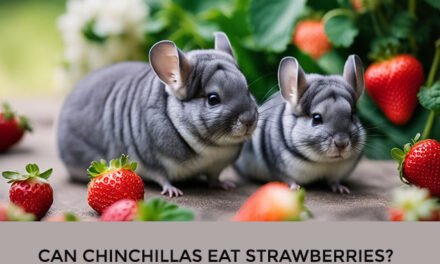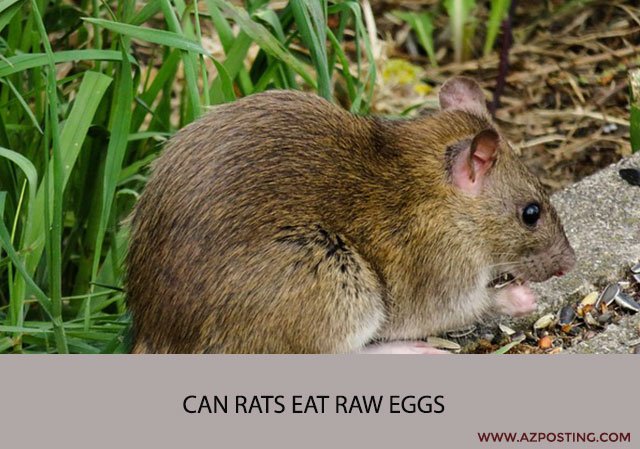Guinea pigs are popular pets and are known for their cute looks and friendly nature. As responsible pet owners, we always want to ensure that our furry friends are getting a balanced and nutritious diet. While hay and pellets are the mainstay of a guinea pig’s diet, we often wonder if we can supplement their diet with other fruits and vegetables. In this article, we will explore whether guinea pigs can eat mandarins.

Mandarins are a type of citrus fruit that are rich in vitamin C and other nutrients. As guinea pigs cannot synthesize their own vitamin C, it is important to provide them with a diet that is rich in this nutrient. While mandarins may seem like a good option to supplement their diet, it is important to first understand whether they are safe for guinea pigs to eat.
In the following paragraphs, we will discuss the nutritional benefits of mandarins, the potential risks associated with feeding them to guinea pigs, and how to safely incorporate them into their diet. By the end of this article, we hope to provide you with a clear understanding of whether mandarins are a suitable addition to your guinea pig’s diet.
Nutritional Benefits of Mandarin for Guinea Pigs

Mandarins are a type of citrus fruit that are known for their sweet and tangy taste. They are also a great source of nutrition for guinea pigs. In this section, we will discuss the nutritional benefits of mandarin for guinea pigs.
Vitamin C Content
Mandarins are an excellent source of vitamin C, which is an essential nutrient for guinea pigs. Guinea pigs cannot produce their own vitamin C, so they must get it from their diet. Mandarins contain approximately 30mg of vitamin C per 100g, which is more than enough to meet a guinea pig’s daily requirements. Vitamin C is important for maintaining healthy immune function, skin, and connective tissue.
Dietary Fiber
Mandarins are also a good source of dietary fiber, which is important for maintaining a healthy digestive system. Fiber helps to keep the digestive system moving and can prevent constipation and other digestive problems. Mandarins contain approximately 1.8g of fiber per 100g.
Natural Sugars and Energy
Mandarins are a great source of natural sugars, which can provide guinea pigs with a quick burst of energy. The natural sugars in mandarins are also less likely to cause a spike in blood sugar levels compared to processed sugars. Mandarins contain approximately 9g of natural sugars per 100g.
In conclusion, mandarins can be a healthy and nutritious addition to a guinea pig’s diet. However, it is important to remember that mandarins should be given in moderation as they are high in natural sugars. It is recommended to limit mandarin intake to once or twice a week and to always wash the fruit thoroughly before feeding it to your guinea pig.
Potential Risks of Feeding Mandarin to Guinea Pigs

When it comes to feeding our furry friends, it’s important to be mindful of what we give them. While mandarins may seem like a healthy and tasty snack for humans, they may not be the best choice for guinea pigs. Here are some potential risks to consider before feeding mandarins to your guinea pig.
Sugar Content and Obesity
Mandarins are known for their sweet and juicy taste, but this sweetness comes from natural sugars. Guinea pigs are prone to obesity, and a diet high in sugar can contribute to weight gain. In addition, excess sugar can lead to dental problems, which can be painful and costly to treat. While mandarins can be given as an occasional treat, they should not be a regular part of a guinea pig’s diet.
Acidity and Dental Health
Mandarins are also acidic, which can be harmful to a guinea pig’s teeth. The acid can wear down the enamel, leading to dental problems and pain. In addition, the high acidity can cause digestive issues, such as diarrhea and stomach upset. If you do decide to give your guinea pig mandarins, be sure to rinse them thoroughly and remove any seeds or stems.
Allergic Reactions and Digestive Issues
Guinea pigs can have allergic reactions to certain foods, including mandarins. Signs of an allergic reaction may include itching, swelling, and difficulty breathing. In addition, mandarins can be difficult for guinea pigs to digest, which can lead to bloating and discomfort. If you notice any signs of digestive issues after feeding your guinea pig mandarins, it’s best to avoid giving them this fruit in the future.
Overall, while mandarins may seem like a healthy treat for guinea pigs, there are potential risks to consider. It’s important to always consult with a veterinarian before introducing any new foods to your guinea pig’s diet.
Proper Serving Size and Frequency

Recommended Portion
When it comes to feeding mandarins to guinea pigs, it is important to remember that this fruit should only be given as a treat in small amounts. We recommend a portion size of no more than a quarter of a mandarin per guinea pig, once or twice a week.
It is also important to note that mandarins should not replace a guinea pig’s regular diet of hay, fresh vegetables, and pellets. These foods provide the necessary nutrients and fiber that guinea pigs need to maintain a healthy digestive system.
Feeding Frequency
As mentioned above, mandarins should only be given as a treat in small amounts. We recommend feeding mandarins to guinea pigs no more than once or twice a week. Overfeeding mandarins or any other fruit can lead to digestive issues and weight gain in guinea pigs.
It is always best to consult with a veterinarian or a qualified animal nutritionist before introducing any new food to your guinea pig’s diet. They can provide you with specific recommendations based on your guinea pig’s individual needs and health status.
Preparation of Mandarin for Guinea Pigs
When it comes to feeding our guinea pigs, we always want to ensure that we are providing them with the best possible nutrition. Mandarin is a delicious fruit that can be a great addition to their diet. However, it is important to prepare it properly to ensure that it is safe for them to eat. Here are some tips on how to prepare mandarin for guinea pigs:
Washing and Peeling
Before feeding mandarin to your guinea pig, it is important to wash it thoroughly. This will help to remove any dirt or bacteria that may be present on the skin. Once it has been washed, you can peel the skin off using a vegetable peeler. Be sure to remove all of the white pith as well, as this can be difficult for guinea pigs to digest.
Removing Seeds
Mandarins contain small seeds that can be a choking hazard for guinea pigs. It is important to remove these before feeding the fruit to your pet. You can do this by cutting the mandarin in half and using a small spoon to scoop out the seeds. Alternatively, you can simply pull the segments apart and remove the seeds by hand.
Serving Techniques
There are a few different ways that you can serve mandarin to your guinea pig. One option is to simply cut the fruit into small pieces and offer it to them as a treat. Another option is to mix it in with their regular food to add some variety to their diet. You can also freeze mandarin segments and offer them to your guinea pig as a refreshing snack on a hot day.
In conclusion, mandarin can be a great addition to your guinea pig’s diet when prepared properly. By following these simple tips, you can ensure that your pet is getting the nutrition they need to stay healthy and happy.
Alternatives to Mandarin in a Guinea Pig’s Diet
When it comes to feeding guinea pigs, it’s important to provide a balanced diet that includes a variety of fruits and vegetables. While mandarins can be a tasty treat for your furry friend, it’s important to remember that they should only be given in moderation due to their high sugar content. If you’re looking for alternatives to mandarins to add to your guinea pig’s diet, here are some safe options to consider:
Other Safe Fruits
There are plenty of other fruits that guinea pigs can safely enjoy. Some options include:
- Apples (without seeds)
- Blueberries
- Kiwi
- Papaya
- Pineapple
- Strawberries
- Watermelon (without seeds)
Remember to always wash fruits thoroughly and remove any seeds or pits before giving them to your guinea pig.
Vegetable Options
Vegetables are an important part of a guinea pig’s diet and should make up the bulk of their daily food intake. Some safe vegetable options include:
- Bell peppers (all colors)
- Carrots
- Cucumbers
- Kale
- Romaine lettuce
- Spinach
It’s important to introduce new vegetables slowly and in small amounts to avoid upsetting your guinea pig’s stomach.
Commercial Guinea Pig Foods
If you’re looking for a convenient way to provide a balanced diet for your guinea pig, there are a variety of commercial guinea pig foods available. Look for a food that is specifically formulated for guinea pigs and contains a mix of hay, pellets, and vegetables. Avoid foods that contain added sugars or artificial colors and flavors.
By providing a variety of safe fruits and vegetables, as well as a high-quality commercial guinea pig food, you can ensure that your furry friend is getting all of the nutrients they need to stay healthy and happy.
Frequently Asked Questions
Is it safe for guinea pigs to eat citrus fruits?
Citrus fruits such as oranges, lemons, and grapefruits are safe for guinea pigs in small amounts. However, they are high in acid and sugar, which can cause digestive problems if consumed in excess. It is best to offer small pieces of citrus fruit as an occasional treat rather than a regular part of their diet.
How often can guinea pigs consume mandarin oranges?
Mandarin oranges can be given to guinea pigs as a treat, but they should not be a regular part of their diet. It is recommended to offer small pieces of mandarin oranges once or twice a week.
Are mandarin seeds harmful to guinea pigs?
Mandarin seeds are not toxic to guinea pigs, but they can be a choking hazard. It is best to remove the seeds before feeding mandarin oranges to your guinea pig.
Can guinea pigs have mandarin skin or peels?
Mandarin skin or peels are not toxic to guinea pigs, but they are difficult to digest and can cause digestive problems. It is best to remove the skin or peels before feeding mandarin oranges to your guinea pig.
What are the risks of feeding guinea pigs mandarin leaves?
Mandarin leaves are toxic to guinea pigs and should not be fed to them. They contain essential oils that can cause digestive problems, diarrhea, and even death.
Which fruits should guinea pigs avoid due to toxicity?
Guinea pigs should avoid fruits that are toxic to them, such as avocado, rhubarb, and tomato leaves. It is important to research any new fruits or vegetables before feeding them to your guinea pig to ensure they are safe and healthy.





